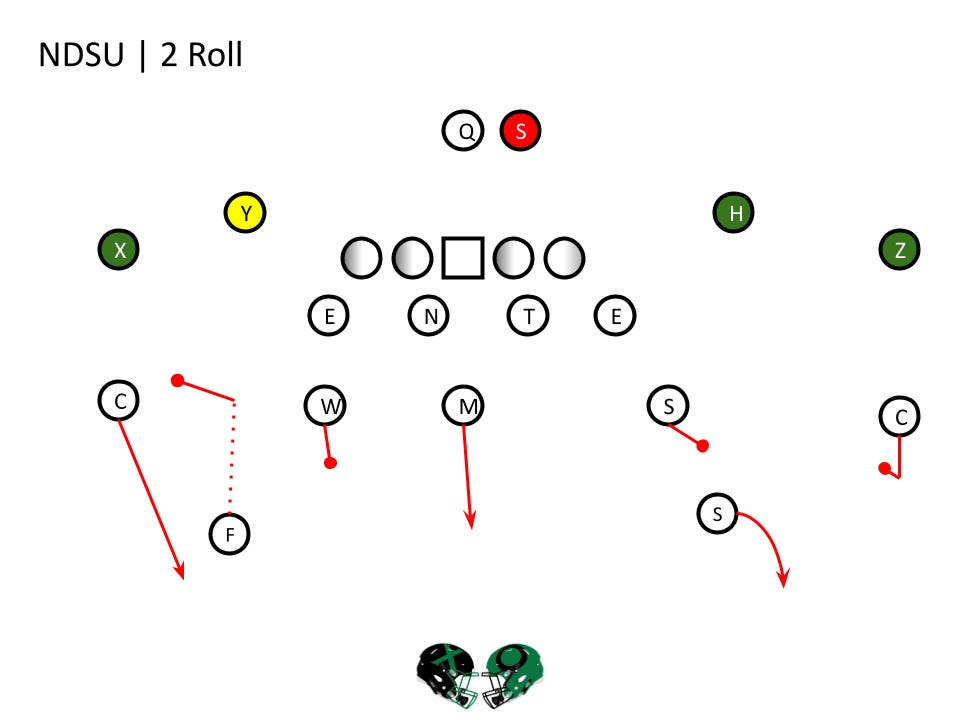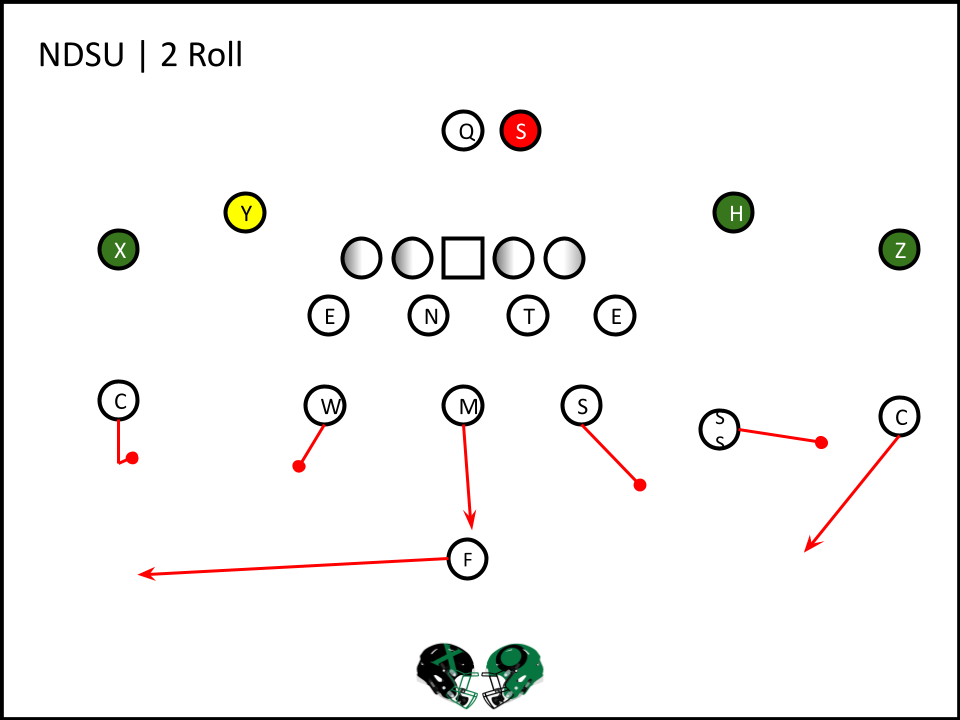North Dakota State's Non-Traditional Tampa Coverages
NTTs, or Non-Traditional Tampa coverages, have become the "sexy" trend on defenses over the last few seasons. For those scratching their heads, I got term "NTT" courtesy of Cody Alexander at Match Quarters. But let’s clear something up right away—NTTs aren’t a brand-new creation, nothing ever is. Variants of these concepts have been around for a while, likely disguised as something like 2-Roll coverage, a concept you might’ve seen buried in a Nick Saban or Kirby Smart playbook.
These coverages are a great example of football's constant evolution, blending classic Tampa 2 principles with modern adaptations to counter today’s offenses. Let's dive into how NTTs have evolved and why they’ve captured the imagination of defensive coordinators across the country.
While this isn’t technically an NTT, you can see the foundational principles at play in concepts like the “Shake 2 Roll” call. This coverage, and others like it, hint at the creative evolution that ultimately led to NTTs becoming a staple in defensive game plans.
Regardless of where NTTs first originated, one thing is abundantly clear—these styles of coverages aren’t going anywhere anytime soon. With their ability to adapt to formations while maintaining structural integrity against both the run and pass, NTTs have solidified themselves as a go-to tool for defensive coordinators at every level.
The question now isn’t if you’ll see NTTs, but how they’ll continue to evolve in the chess match between offensive innovation and defensive response. Let’s break down what makes these concepts so effective and how you can use them to your advantage.
In 2024, North Dakota State joined the growing wave of teams utilizing NTTs, incorporating the coverage predominantly on 3rd down. Their use of NTTs wasn’t revolutionary, as the concept has been widely adopted in recent years, but NDSU put their own spin on it by combining the coverage with creative pressure designs. This blend of discipline and aggression added another layer to their defensive versatility, creating a unique challenge for opposing offenses.
The Basics
A traditional NTT starts with familiar Tampa 2 principles but adjusts to provide more flexibility. In its core structure, the safeties play deep halves, while an underneath player—often a linebacker—runs the pole, carrying any vertical threat from the middle of the field. Two hook players operate in the intermediate zones, maintaining inside-out leverage, while the corners hold the flats, ready to break on any outside routes.
This foundational design makes NTTs effective against a wide range of offensive concepts, but NDSU took things further by integrating creative pressure packages that forced offenses into tough decisions.
NTTs thrive on flexibility, allowing defenses to rotate various defenders into the key roles while maintaining the overall structure of Tampa coverage. In 2024, NDSU demonstrated an exceptional ability to shuffle defenders within their “2 Roll” look, creating multiple variations of NTTs. This movement not only masked their intentions but also added a layer of complexity designed to confuse opposing quarterbacks and offensive coordinators alike.
By redefining which players occupied the flats, hooks, halves and pole positions on any given play, NDSU forced offenses to adjust on the fly, often leading to hesitation or mistakes. It’s a great example in leveraging alignment and assignment to generate chaos while maintaining sound coverage principles.
Standard Variation
North Dakota State’s standard variation of NTT coverage begins by showing a 1-high shell, with the field safety rotated down into the box. Pre-snap, the defense disguises its intent, but post-snap, they transition into a Tampa 2 structure. This rotation moves the middle-of-field (MOF) safety to cover the deep half in the boundary, while the field corner drops into the other deep half, effectively forming a Tampa look.
This is the foundational version of the coverage: show 1-high pre-snap, rotate to a 2-high structure post-snap, and rush with your standard four down linemen. By sticking to this simple yet effective variation, the Bison maintained a standard defensive front while keeping the offense guessing on where coverage support would materialize.
Get Creative
This might sound crazy, but I encourage defensive coordinators to get creative with how they plug players into a Tampa coverage. The flexibility of NTTs allows for endless possibilities to confuse offenses, and NDSU provides a perfect example of innovation within this framework.









